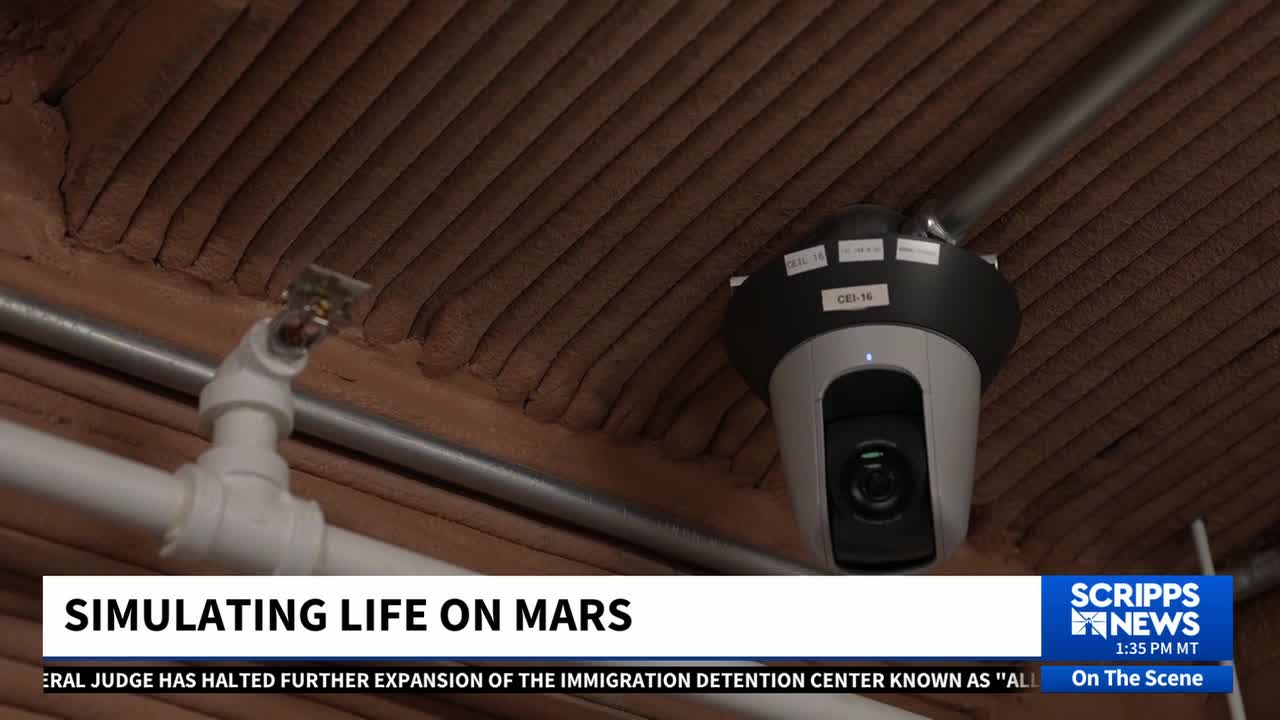Packed into 1,700 square feet, NASA's simulated Mars habitat is designed to be a home very far away from home. Known as the "Crew Health and Performance Exploration Analog," or CHAPEA mission, the crew members will work on all kinds of experiments during their year inside the Mars habitat.
"This is designed to be a Martian habitat like we might expect for a Mars surface mission," said Suzanne Bell, the mission's co-principal investigator. "So, it's designed as both a living and working space."
The structure is 3-D printed, using a form of poured concrete. It's about the size of a four bedroom, two bathroom home. For one year, starting this fall, four humans will live inside and simulate life on Mars right here on Earth.
"We hope they feel a sense of accomplishment and know that their contributions are absolutely and critical, invaluable to the path of landing humans on Mars," Bell said. "We have to know what to send. We have to know how to support that crew and we won't be able to do it without collecting data like in CHAPEA."
The crew's work will include working with robots and trying to grow crops, as well as simulated "Mars walks," outside the habitat structure itself.
RELATED STORY | A NASA crew is about to finish a yearlong Mars mission isolation experiment
Then, there is the psychological aspect to all of this.
The psychological aspects of going to Mars are unprecedented: long-term isolation, living and working together with a small crew, living under resource restricted environments, finding the will to eat the same rehydrated food over and over again," Bell said. "So, the psychological aspects are very taxing."
They are situations that the incoming crew of four specially-selected people will soon see for themselves.
"For me, I think the biggest thing is humanity becoming a interplanetary species," said Daniel Hernandez, CHAPEA's project manager. "So, I think that is the greatest thing that we can get out of CHAPEA is enabling us to now explore a neighboring planet and explore it successfully."
In this mission, NASA is also going to replicate the communications delay between the Earth and Mars. It is 44 minutes long. That may sound like a lot of lag time, but depending on where the planets are as they orbit the sun, the Earth and Mars can be as close as 33 million miles – or as far apart as 250 million miles.
NASA is working to get humans to Mars by the 2030s. It is considered an ambitious schedule and this Mars habitat mission – the second of three that NASA is conducting – all play a role in preparing for humans to travel to Mars.






